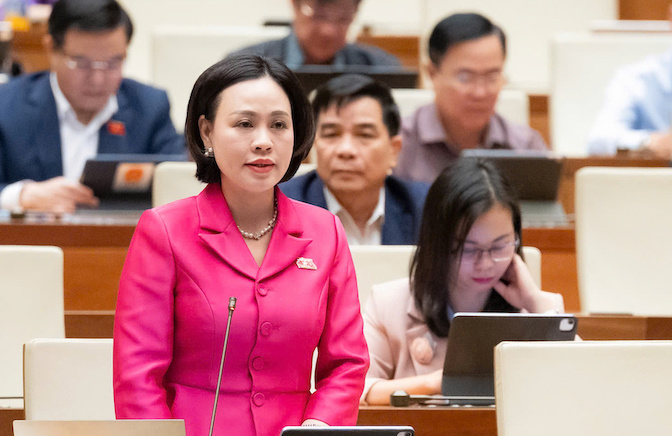Planning needs to be associated with disaster risk management
On the morning of November 28, the National Assembly discussed in the hall the draft Law on Planning (amended); Adjustment of the National Master Plan for the period 2021 - 2030.
Contributing opinions, delegate Trinh Xuan An (Dong Nai delegation) proposed that the National Master Plan, socio-economic development plan, key projects and works, urban planning and regional and regional planning must be linked to natural disaster risk management; invest in additional inter-regional and inter-provincial monitoring systems to handle the consequences of the past.
He said that new standards and new data from recent historical flood peaks should be applied to design planning systems, especially those related to lakes and hydropower systems.
"It is necessary to review the entire small hydropower system, evaluate the flood discharge process to avoid the situation of "correct process but the consequences are still very serious" and clarify this factor in the National Master Plan" - the delegate said.

Sharing the same view, delegate Tran Hoang Ngan (HCMC delegation) said that in adjusting the National Master Plan for the period 2021-2030, it is necessary to add content to pay attention to the situation of climate change, the weather is getting harsher, causing extremely heavy damage.
For the South Central Coast and Central Highlands, in the face of the severe devastation caused by the current floods, delegate Tran Hoang Ngan suggested being very cautious in developing a chain of coastal urban areas.
From the most surprising flood practice in Khanh Hoa, the delegate said that planning work must ensure capacity to prevent natural disasters, especially the issue of housing planning.
Adding an intra-provincial railway connecting old provinces and industrial parks
Regarding the adjustment of the national master plan, delegate Trinh Xuan An said that the whole country is divided into 6 socio-economic regions and each region has its own development priority, but only the North Central region associates socio-economic development with national defense and security.
The delegate suggested that all socio-economic development regions must have content on ensuring and linking socio-economic development with national defense and security, especially border-related regions.
In addition, it is necessary to integrate the planning of the defensive posture into the national planning, especially in the context of organizing new administrative boundaries and merging provinces and local government organizations at 2 levels.
Delegate Trinh Xuan An also proposed to clarify the mechanism of dual use and supplement the content of the national planning to be associated with the sea and island defense posture.
According to him, it is necessary to clearly identify the dual-use infrastructure system for important national projects, especially for railways, high-speed railways, seaports, airports and large projects for highways.
Delegate Tran Thi Hong Thanh (Ninh Binh delegation) agreed with the policy of prioritizing railway development on major economic corridors, associated with seaports, gateways and international border gates, and economic centers. However, if only national railway axes are developed but there is a lack of inter-provincial and inter-provincial connection systems, then people and businesses in the new localities after the merger will still have to depend mainly on roads.

"This puts great pressure on the expressway and national highway systems and it is very difficult to achieve the goal of reducing logistics costs, as well as the goal of shifting transportation structure from road to railway" - Ms. Thanh said.
Therefore, the delegate suggested that in the railway orientation, in addition to the investment content of focal railway lines, it is necessary to add the phrase: "Rellow connecting within provinces and inter-provincial in some localities".
These railway lines will connect the new province with the old province, connecting industrial parks, logistics centers, heritage tourism areas with the national railway network and high-speed railways in the future. Thereby, helping to share traffic with roads, while supporting the formation of growth poles at the provincial and sub-regional levels, in line with the spirit of reorganizing development space after merging administrative units.
At the same time, it is necessary to add this content to orient the development of a railway covering all three levels: National axis, inter-regional connectivity and intra-provincial connectivity. Thereby realizing the goal of increasing the market share of railway transport, reducing logistics costs and effectively exploiting new development space after the arrangement of administrative units.











